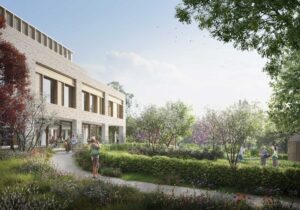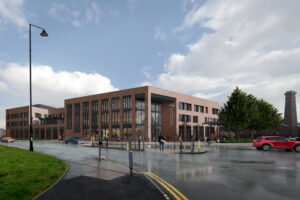Exploring the Core Concepts of Sustainable Building Practice

As climate change and environmental concerns continue to dominate global conversations, the importance of sustainable building practices cannot be overstated. The construction industry has a significant role to play in reducing its environmental footprint, and by embracing innovative, sustainable practices, we can build a greener, healthier future. Let’s take a closer look at the key concepts that drive sustainable building and how they contribute to more responsible construction.
1. Passive Design Strategies
One of the essential principles of sustainable building is passive design, which focuses on utilising natural environmental conditions to maintain comfortable indoor temperatures and reduce the need for mechanical heating and cooling systems. By orienting a building to maximise sunlight exposure, using shading devices to block heat and ensuring proper ventilation, passive design can minimise energy consumption. The goal is to harness natural resources like sunlight, wind and thermal mass to reduce reliance on external energy sources. For those looking to further enhance their sustainability efforts, achieving LEED accreditation is a valuable step, as it recognises buildings and professionals that meet high environmental and performance standards in construction.
2. Circular Economy in Construction
A sustainable building practice goes beyond just using eco-friendly materials; it also involves adopting a circular economy approach. This means designing buildings with the intention of repurposing materials and minimising waste at the end of their lifecycle. By embracing this concept, construction projects can reduce the demand for raw materials and limit landfill waste.
3. Sustainable Land Use and Site Selection
The location and impact of a building on its surrounding environment are also integral aspects of sustainable construction. Site selection is crucial because it can influence how well a building integrates with the local ecosystem. Sustainable practices aim to minimise land degradation, preserve natural habitats and avoid disrupting local ecosystems. By choosing sites that reduce the need for excessive grading or land clearing, buildings can coexist with nature, benefiting both the environment and the people who use them.
4. Building Resilience and Adaptability
A sustainable building must not only be environmentally friendly but also resilient in the face of changing conditions. This includes designing structures that can withstand extreme weather events and adapt to future climate scenarios. Designing buildings that can be easily adapted for future use or to accommodate changing needs ensures they remain relevant and functional for many years.
5. Smart Technology Integration
Technology plays a pivotal role in making buildings more sustainable. The integration of smart technology allows for more efficient management of a building’s systems, such as lighting, heating, cooling and water usage. Smart sensors and controls can optimise energy consumption by adjusting systems based on occupancy and environmental conditions, reducing waste and improving overall efficiency. Renewable energy sources can be monitored and controlled through advanced building management systems, ensuring that energy use is always optimised.
6. Community and Social Sustainability
Sustainable building is not only about environmental responsibility but also about creating spaces that contribute positively to the community and society. Community sustainability involves designing buildings that foster inclusivity, promote social well-being and encourage a sense of connection among people. Mixed-use buildings that combine residential, commercial and recreational spaces can help reduce urban sprawl and support local economies. By incorporating public spaces, walkable areas and affordable housing, sustainable buildings help create vibrant communities that support a high quality of life for everyone.
Conclusion
From passive design and circular economy principles to site selection, smart technology and community well-being, these practices work together to create buildings that are not only energy-efficient but also adaptable, long-lasting and socially responsible. As the world moves toward a more sustainable future, the construction industry’s embrace of these principles will be vital in shaping a healthier, more resilient planet for generations to come.





